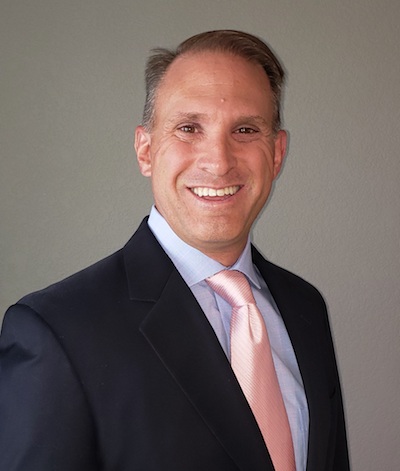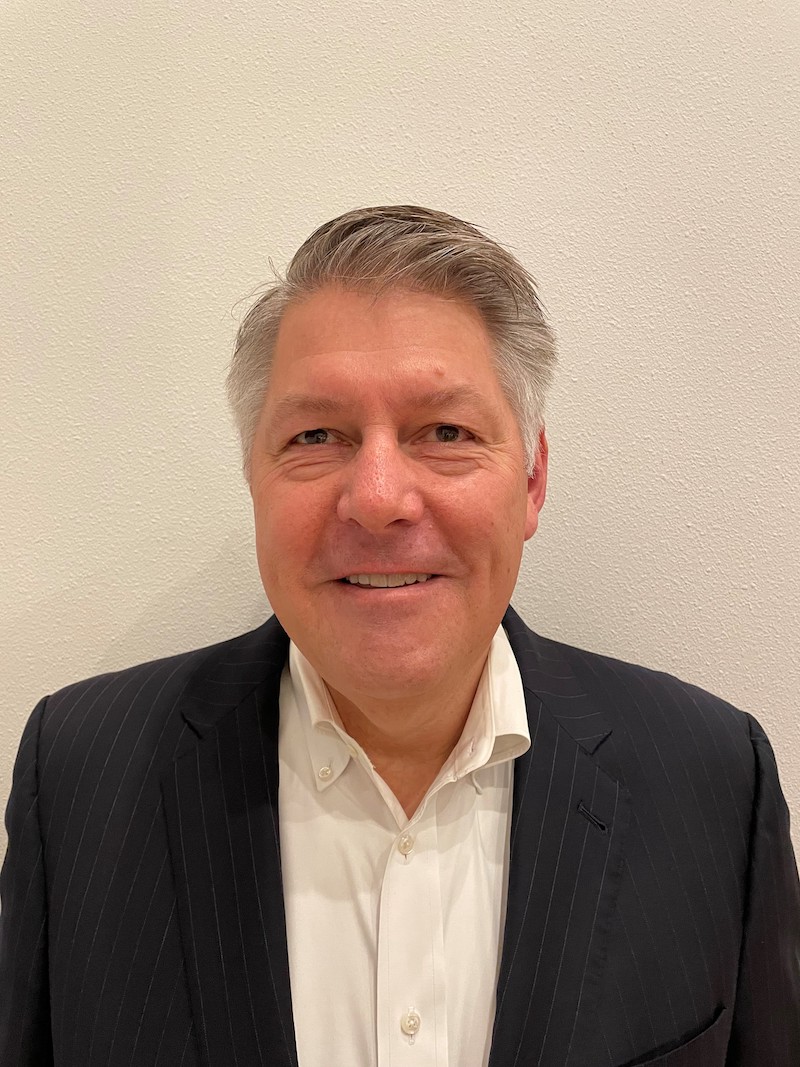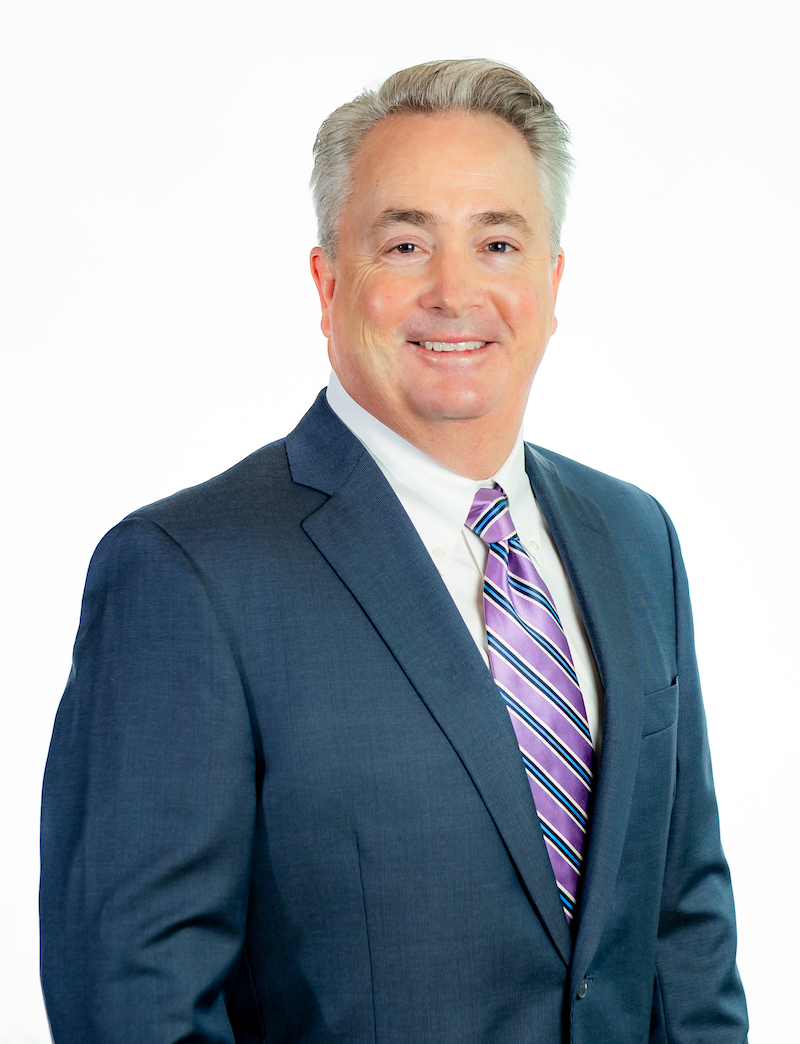Zeroing In: US utilities’ path to carbon-free
US utilities will bear the main burden of efforts to decarbonise the country’s power grid. Proximo gathered together utilities, consultants, and development and finance specialists to discuss the way forward.

Supported by
 The Inflation Reduction Act (IRA) brought renewed attention to, and provided increased support for, efforts to bring the US power sector closer to net zero. A raft of tax credits, lending programmes and direct subsidies put a real spring in the sector’s step.
The Inflation Reduction Act (IRA) brought renewed attention to, and provided increased support for, efforts to bring the US power sector closer to net zero. A raft of tax credits, lending programmes and direct subsidies put a real spring in the sector’s step.
Legislators, regulators, investors, and customers are pushing utilities to adopt the goal of carbon-free electricity by 2050 or earlier. Utilities are likely to be able to achieve the first 80-90% of emissions reductions generally at an acceptable incremental cost using existing technologies. The remaining 10-20% are likely to be more challenging and require considerable creativity.
Proximo, with the support of Leidos, brought together a group of experts active in the sector to discuss the scale of the challenge and possible solutions.
Participants were:
 Larry Bekkedahl, senior vice-president, advanced energy delivery, Portland General Electric
Larry Bekkedahl, senior vice-president, advanced energy delivery, Portland General Electric
 Michael Giampetro, vice-president, conventional and emerging technologies, energy & infrastructure consulting, Leidos
Michael Giampetro, vice-president, conventional and emerging technologies, energy & infrastructure consulting, Leidos
 Kristina Lund, president and CEO, AES Indiana and AES Ohio
Kristina Lund, president and CEO, AES Indiana and AES Ohio
 Rick Miller, power sector principal consultant, HDR
Rick Miller, power sector principal consultant, HDR
 Ronald Moe, vice-president, energy and infrastructure consulting, Leidos
Ronald Moe, vice-president, energy and infrastructure consulting, Leidos
 Bill Newsom, Jr., CEO, Mitsubishi Power Americas
Bill Newsom, Jr., CEO, Mitsubishi Power Americas

 Mariana Primera, managing director, power & infrastructure, John Hancock Financial
Mariana Primera, managing director, power & infrastructure, John Hancock Financial
Proximo: Let's talk about the scale of the challenge in dealing the hardest to abate emissions. What do we mean by that and why is it difficult? Is it fair to say that there is a stubborn 10-15% core of emissions?
Kristina Lund, AES (KL): AES Indiana follows an integrated resource planning (IRP) process every three years to help define the future of energy in Central Indiana, and we’re going through that process this year. We've done four of our five public meetings, so we’re 80% of the way there, and we have announced our preliminary modelling results. And what is fascinating is that within 20 years, across all the portfolio strategies that we have evaluated, we get to 85 to 90% of energy coming from renewables or zero carbon sources, so there is that remaining 10 to 15% that is the hardest to address. But we first have to get from where we are today to that remaining 10 to 15%, and in 2021, 60% of electricity in the US came from fossil fuels. So there is a huge challenge just in executing the projects to take us from today to the stub of 10% to 15%. The sources of that hardest to abate portion include extreme weather conditions, both cold and hot, because some renewables may not be available in those conditions, and demand may increase during those periods. Then there’s seasonality and variations in the length of the day. There are a variety of technologies to address that, and 20 years to make them commercially viable. It will vary, however, in each location in the US and around the world, depending on their circumstances.
Proximo: Is the struggle with that stub highly location-specific? If you live in a more… damp part of the world, does the challenge get any easier?
Larry Bekkedahl, PGE (LB): We have legislation driving us and I can't speak for all states but our decarbonization goals are 80% renewables by 2023 and 100% by 2040. Most states are net neutral by 2050. Everybody's got slightly different numbers, but they’re all very aggressive. That 80 to 85% number is fairly doable, but the next 15 to 20%, is going to be the extreme challenge. Weather is also changing. In Portland, Oregon, for example, the wildfires of Labor Day 2020 were driven by a cold front coming from Canada early, and were followed by an ice storm in the spring with two inches of ice on equipment, while the following summer it was 116 degrees as a heat bubble. All of these events were 1in40 or 1in50 year events. This year we're back to wildfires and having to do public safety power shutoffs, and California reaching a new all-time peak of 52GW of peak made it a very challenging summer. The 116-degree peak last year drove our energy peak10% higher than any other time, winter or summer, in prior years. We came close to hitting that again this summer because everybody that didn't have air conditioning last year now has air conditioning. The Integrated Resource Planning process is challenging for all of us to meet our decarbonization goals, but it is just as difficult if not more for regulators to understand the transition. I see a future where 75% of our energy needs and our capacity needs are going to come from generation plants that are located outside of load areas. And I see a future where 25% is coming from both generation and flexibility of load located in our service area. When California sent text messages out to customers and asked them to curtail or pull back their energy usage and not charge their vehicles, etc., that made a huge difference. But how does that become part of the fabric of the grid, where it is automated and customer behaviour is not altered?
Bill Newsom, Mitsubishi (BN): The energy sector accounts for about 25% of US emissions in the US, and we're looking at four key enablers that help us reduce our use of fossil fuels. One is scale, two is technology adoption, the third is policy, and the fourth is cost. We are working with an electrolyzer manufacturer that has been scaling units from a very bespoke 1MW to 5MW. We recently produced an integrated decarbonization model for a utility in the Pacific Northwest, using different pathways, technologies, and generation capex required to get to net zero, and what customers would have to pay for them. One path shows that it is possible to reach zero emissions by 2050 without hydrogen as a long-term storage. But in that scenario, the last 10% will cost approximately 170% more than the first 90%. In the other scenario, which includes hydrogen as a long-term storage component, the cost is almost half overall. In scenario one you're not taking curtailed renewables and converting those into long-term storage. Instead, you're overbuilding renewables. And when you look at being able to maintain a reliable grid, you either need to have a huge overbuild on renewable generation coupled with lithium-ion battery build out, or you can use hydrogen as a long-term storage component.
Proximo: We’d like to go back quickly to what happened in California with demand response. Is that repeatable over time?
Rick Miller, HDR (RMi): The experience of regulated utilities has been to introduce demand response programs for water heaters or air conditioning, with a nominal monthly credit to participate in that, and over time shifting to large industrial users. But experience has shown that once it begins to get implemented on a frequent basis, then it seems to introduce demand response fatigue. ERCOT’s market planning included a much wider frequency range through large industrial load demand response, but it has not been working well.
LB: Through automation and smarter home appliances and equipment I believe it repeatable. For residential customers, if after three days the heat stays high, fatigue does set in and customers override their thermostats. We also need to think about which of our industrial and commercial customers, their equipment and what flexibility they may have. We're finding customers that can flex 6MW instantaneously, and a lot of our customers have incentives to decarbonise and improve their ESG performance. What we need to do is make sure we have the ability to communicate with those customers effectively so you can schedule flexible loads a day ahead.
Mike Pepe, Elysian (MPe): The situation faced by US utilities regarding their CO2 emissions seems similar to what they faced in the seventies, when power plants suddenly needed to invest in expensive scrubbers, and I remember doing a project financing for a scrubber in Indiana. I believe that in 20 years’ time most thermal plants that remain in the utility fleets will have carbon capture associated with them. But it's challenging for utilities to build these on their own, balancing various constituencies and getting the massive expenditures into rate base. These CO2-mitigating assets are relatively new for these volumes of low CO2 flue-gas, and guessing their costs is difficult, which means you utilities will get your knuckles rapped if you guess wrong and go over budget. But carbon capture is proven. Mitsubishi's Petro Nova plant in Texas started in 2017, and has operated exceptionally well, though the associated oil fields are another story. I’ve recently visited Alberta, where several kinds of capture technology are operating. I feel we’ll have more IPPs [independent power projects] along the lines of what we have been developing with Starwood as add-ons to plants. The costs are still not low – the capture project we are developing at their approximately 500MW plant which will capture about 2 million tonnes of CO2 per year will cost less than the $1 billion Petra Nova capture plant, but not a lot less. The encouraging news for all of us is that there is now a substantial price established for the formerly worthless CO2. Cashflow of carbon capture and sequestration looks a lot better with $85 per tonne in 45Q credits than it did at $50 per tonne. That is about $170 million per year payable on 2 million tonnes for 12 years. That makes the installation of capture equipment economic at power plants. However, I think the IPPs will build them before they migrate to utilities, simply because of their challenges in estimating costs for both the capture plants and the storage costs.
Proximo: So who has the balance sheet to pay for these measures? Are utilities placed to do this?
Marianna Primera, Manulife (MPr): As an institutional investor, we want utilities to be on the path to decarbonization, and we want to know if they are in line with the industry or lagging. But that last 10% to 15% will require support from certain emerging technologies, some of which are developing well, but are not yet deploying at scale. And we need to be comfortable that utilities can take these risks. If costs do increase, can these costs be passed on to consumers, and can consumers withstand the increases? Will this create issues with the regulators? Those pieces still need to be worked through. If we look back, we became very comfortable with solar, wind and battery storage, even though we’ve since seen some headwinds with supply chains and transmission. Today, we’re excited about emerging technologies and continue to monitor them going forward.
Proximo: What are the technical challenges to deploying technologies to deal with that stub?
Ronald Moe, Leidos (RMo): We need to keep in mind that while the US electric power sector is facing this unprecedented challenge, most of the rest of the industrialized world will be going through the same challenge. So the US electric power sector will be competing with the rest of the world – not to mention other sectors of the economy. Lithium ion will be an issue in industry and transportation, and hydrogen or renewable natural gas, which look very attractive in the power sector, are also major parts of the solution in the industrial sector. The good news is that the power sector has 20 years to make the big investments at commercial scale, and there are a lot of potential solutions. All of them have at least one material hurdle, and none of them are likely on their own to solve the problem. But in combination a portfolio of these solutions very likely can.
Proximo: We can think of maybe three main technologies that will be part of the solution. What do you think are the advantages and disadvantages of the main solutions?
LB: I’d like to stick with transmission for a moment, because certainly in the west, we rely on long transmission lines, for example bringing wind from Wyoming or Montana to the West Coast. The US and Canada also have opportunities. Alberta and British Columbia have got roughly 40 to 45GW of generation available, and demand peaks at about 25GW, but there is less than 4GW of transmission between the US and Canada on the west. Transmission could open a floodgate. Pacificorp finally got Gateway South off the ground, but that took somewhere between 15 and 20 years, so how do you get needed renewables delivered to populated areas where transmission is constrained? Hydrogen looks like it will have a role to play in the future, but it is beyond 2030 at this time.
At PGE, we operate distributed customer-owned standby generators – 130MW that we sync with our system and use as our contingency reserve. They're diesel, so air quality issues and DEQ come into play, but if those were all converted to hydrogen, that's a huge resource that's sitting out there. If microgrids become a type of demand response utilization device, and gave us flexibility on the system, we can build a virtual power plant. That includes rooftop solar and batteries – vehicle to grid as well as grid to vehicle. These technologies are going to have setbacks, and the early days of our 130-year history we weren’t perfect. But it takes dedication and commitment to move new technologies into our industry. The technology is only as good as the operators. So as we creating virtual power plants – one associated with distributed generation, larger solar, and batteries, a second associated with transportation, and a third associated with demand response type activities. These are actual control rooms with operators similar to existing power plants.
Proximo: Will batteries potentially surprise us on the upside?
Michael Giampetro, Leidos (MG): There are new sources of lithium planning to come online, though one of the biggest topics of conversation on my team is still the supply chain. Demand continues to outpace the supply of modules and batteries. Smaller commercial & industrial or residential customers are struggling to get the attention of manufacturers compared to developers putting in orders for GW or GWh of capacity. With that, I do think that by 2030 you will see other significant alternatives to lithium ion for storing electricity and long-term storage technologies becoming more viable. I’d also like to mention two technologies that exist today and are critical to solving the CO2 problem. One's nuclear, whether small modular reactors or current large reactor designs that we bring online on time and on budget. The other is hydro, whether conventional hydropower or an increased emphasis on pumped hydro as a storage medium. They’re proven tech and large capacity. But it's going to take a regulatory and permitting environment that allows them to get constructed thoughtfully.
Proximo: We haven’t said much about carbon capture and hydrogen yet.
KL: There are locations where hydrogen, particularly green hydrogen, can work really nicely. From an Indiana perspective, I really like the idea of reusing infrastructure, so upgrading natural gas infrastructure at a reasonable cost to use hydrogen or carbon capture could be promising. Hydrogen should help address some of the transition’s potential problems with reliability or costs, and we’re very interested in nuclear (small modular reactors) as well. It’s helpful that the federal government's programs are providing some early-stage funding and research for emerging technologies. As a utility, we need to have greater proof of commercial viability before we can invest, and policy can make a big difference.
MG: Hydrogen, renewable natural gas and CCS are very viable technologies, with hydrogen serving more as a storage medium than a fuel, though its scale needs to increase so that it becomes more cost effective. The standard solar plant today is typically oversized on the DC side by 30%, so 30% of its output is being wasted during periods of good irradiance because there is no cost-effective way to store it or because the markets have driven developers to oversize the DC to supply energy and capacity. Hydrogen and other storage technologies have an opportunity to capture that.
RMi: The hydro and pumped storage industry now see interest in sustainable closed loop pumped storage development where there are no aquatic or fishery issues after learning from our decades of not doing it responsibly or sustainably from the 50s, 60s and 70s. Groundwater questions are a little bit more easily studied and understood. For example, there are three projects today that have had their licenses and have met all the regulatory approvals and have not started construction. One's in California – in an abandoned iron ore mine 50 miles east of Palm Desert – another is in Oregon, and the third is in Montana. They have yet to secure an offtake agreement and are not able to obtain financing because putting a value on their products and services is so difficult. Offtakers such as investor-owned utilities in California are not able to rate-base them. Utility commissions and regulators need to be brought up to speed on the total value proposition for all forms of storage.
LB: I’d like to highlight two overlooked technologies. One is digital AI and machine learning. We need to get better at understanding our loads and customers and how to serve them. The second one is innovation. Utilities in the 70s and 80s were very innovative but that tailed off in the 90s. Utilities – and regulators – need to focus on the best way to deploy new technologies, to adapt, and to innovate.
MPe: The technology for capturing CO2 has been around 50 years, and thanks to the efforts of Senator Manchin in the IRA, there's real value in CO2 now. And there are some promising applications that will improve efficiencies, though they are high-cost at the moment. Svante has a technology that looks like it works and it's not an energy hog, compared to the older proven amine based projects for capturing carbon. We have spent a long time working with risk-averse tax equity providers to get them ready for this, though the tax equity market is set to change significantly. Even if we won’t be using tax equity after the IRA, we still need to persuade institutional investors that we can transition from the older proven technologies where the economics aren’t great to newer technologies where we are scaling up a single demonstration plant, and should eventually have much lower opex. Lenders are going to be a big part of picking the winners – not just in carbon capture, but also in energy storage.
BN: Like any investment you will need your decarbonisation portfolio to be diversified, though how you diversify will vary by region. I’d like to talk briefly about adapting existing generation equipment. In Atlanta, at Georgia Power's McDonough plant, we validated a 20% hydrogen blend with M501G turbines – the largest blend to date. We did four tests at full load and at minimum load and we were able to demonstrate that when injecting 20% hydrogen by volume the turbine and systems worked very well. On the 2 on 1 combined cycle plant we’re working on in Texas with Entergy, we’re looking at adding a new 20-mile pipeline from a Texas salt dome. It's approximately a 20% cost adder, so we are looking to blend or sleeve the existing natural gas pipeline, or recoat it so that we can reuse that infrastructure and reduce the cost. Mitsubishi Power’s Takasago campus includes our R&D centre, a 1 on 1 combined cycle power plant called T-Point 2, and a $50 million hydrogen park. There we’ve demonstrated a 50% hydrogen blend on an M501JAC, our largest advanced-class gas turbine, and we've also run 100% hydrogen on our H-25 gas turbine. But the offtake is key. In Delta, Utah, the Intermountain Power Agency [IPA] owns the last two coal plants feeding electrons into the state of California, but they're shutting them down and repowering with two 1 on 1 combined cycle M501JAC gas turbines - they'll start at 30% hydrogen and increase to 100% hydrogen over time. Next door to the power plant Mitsubishi Power and Magnum Development are building the world's largest green hydrogen production and storage facility. The Advanced Clean Energy Storge Hub also received a $500 million loan guarantee from the Department of Energy – its first loan in the last ten years. What makes this hydrogen hub possible is a financeable offtake agreement. IPA created that demand because it wants to bring green electrons into the LA Basin.
RMo: I think I have a list of 20 potential solutions rather than the three you mentioned, and I think by 2040, there will be ten others that we don't even have on a list today. The key is for federal and state policymakers to create a policy and then stick with it, because the current instability is not helpful. Utilities need to articulate how their needs in the 2040s and 2050s will be different from what they will be in the 2030s, because that will lead to financeable projects.
MPr: We're not in a place to decide which of the emerging technologies is going to be the winner and we believe in a balanced diet, rather than just picking one. Our portfolio is 75% utility lending, and the remaining 25% is project finance. To make a 10- to 15-year loan to an emerging technology, we would need an offtake agreement with a highly rated utility, and we would also need that agreement to be emerging technology-friendly. It needs to be friendly towards availability or other requirements, and needs to ensure that minor or medium setback will not lead to the loss of the PPA. We have heard about some market success stories with new technologies, but also some significant failures, and those stories do filter back to investment committees.
Proximo: What sort of which financial, or regulatory, or investment structures are going to be best placed to get abatement technologies working?
RMi: The priority is educating the regulator community about how the industry is changing and creating some certainty on cost recovery. Or alternatively putting in place an improved market structure that values what new technologies bring to the grid. Market structures like in California, Texas and PJM would not be able to recreate the reliable grid we've enjoyed for a hundred years. We need to link policy, physics and financial certainty.
Proximo: Do we think that the deployment of decarbonisation technology will mirror what happened from the 1970s, with the growth of the independent power sector?
KL: These emerging technologies will go through different phases, with a first phase where there will be federal funding or other incentives available, but where ultimately the provider of that capital is willing to take a lot of risk to prove out the technology. Then it could move to more of an IPP-style market, in which AES has its roots. In places like California where technologies often get deployed first there's a lot of alignment between the policy and the customers. You can match a risk-taking provider of emerging technology with customers who want to go fast. Once it's been proven in a few different places, then it becomes easier to fold it into the IRP process. This process is a very cool feature of our industry and its about getting all the required stakeholder input, doing robust modelling, thinking hard about reliability, affordability and sustainability, and then debating it with all of your stakeholders, so you can meet as many competing objectives as possible.
MPe: The question is a month late. A month ago there was a long wish list of regulatory changes needed, and then everybody's wish came true with the IRA, though more on the IPP side than the utility side. The solar guys are happy, the wind guys are happy, and the battery guys are ecstatic because they're not tied to what their source of energy is anymore. But the utilities are still responsible for the reliability of the grid, and all of this new solar, wind, and battery capacity is going to create more pressure. And if I may, can I add that Carbon Capture developers are happy too, because we have been given substantial financial encouragement to take the CO2 from the baseload thermal plants that currently support the reliability of the grid.
KL: The Bipartisan Infrastructure Act and the IRA are still relevant for SMRs and other technologies. And it ensures that we should end up in the same place whatever changes take place in the portfolio over the next, say, 5 to 10 years. The IRA really is an inflection point.
BN: A production tax credit for hydrogen and 45Q credits for carbon storage are going to help, but we must remember that green hydrogen is dependent on low cost renewable generation, and anything that slows the build-out or causes constraints makes green hydrogen scale even slower. But with interconnection queues for solar backed up, the fact that the IRA does not address transmission is a problem. Inflation and supply chain pressures can make decarbonization substantially harder. Energy security and reliability concerns can lead carbon concerns to take a back seat. But high gas prices can push companies to invest in decarbonization.
Proximo: Mariana, do you think the optimal structure is going to be external or internal to utilities’ balance sheets?
MPr: It will likely be a combination; however it will be important to address concerns about transmission constraints and affordability. Utility commissions are interested in emerging technologies, but they are struggling to approve investments when bills have gone up by 40%. We are excited about the IRA, but there will be a need for additional federal support. It’s been said that sometimes there’s no better way to stop a project than by doing nothing. On that, the federal government will need to get behind these technologies.
MG: I do not envy utilities having to serve load between now and 2050, but particularly between now and 2035 or 2040, when we probably will achieve the 80% reduction. The electrification of transportation in the industrial world will significantly increase electrical demand, even as generation becomes ever more intermittent. The last 20% will not be possible without having CO2-free, dispatchable generation. It could be from storing hydrogen and then burning it in existing equipment, or through having some amount of natural gas-fired generation and removing the carbon dioxide through CCS, or through small modular or traditional reactors, or finding a way to develop hydro or pumped hydro. But load-serving entities need to have a flexible and dispatchable way of serving their load.
RMo: Utilities will need to figure out how to keep the momentum going, because if we haven't met this this goal in 2050, utilities will be held responsible. Not IPPs, not technology developers. And the politicians who were involved in 2022 will long since be either dead or forgotten. Utilities may have to lead, even at a stage of the development process that really isn't their strength.





